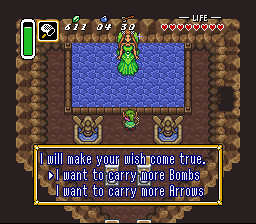With the PS3 re-release of this classic RPG on its way in just a couple days, I figured I’d post my satirical review of the story while it’s relevant! One or two updates per week until I’m done with them.
As I’ve mentioned elsewhere, I wrote this script a few years back when replaying Tales of Symphonia, meaning to turn it into a lengthy video review. My heart wasn’t in it when I tried recording, though, because I’m not versed in the language of cinema and video.
That said, no reason to let it go to waste. I may not love making video reviews, but I do love Tales of Symphonia. You’ll just have to use your imagination and memory at some points where clips would have been. =P
My script is incredibly long because the game is incredibly long, so here are the tl;dr takeaways if you want to read something specific:
Part 1: Beginning – Magnius at Palmacosta
- 1-1: Colette is written unbelievably inconsistently from the first five minutes
- 1-2: Lloyd gets verbal smackdowns all the time early on and has a chip on his shoulder
- 1-3: Tales of Symphonia starts a lot like Secret of Mana; also, dat Dragon Quest VII hero design
- 1-4: Lloyd “stop apologizing, you dork!” Irving actually apologizes more than Colette
- 1-5: What’s so weird about wings? Foreshadowing?
- 1-6: The first big heroic deed in Palmacosta raises the classical problem of evil, which secretly raises the classical Münchhausen Trilemma and Cartesian doubt and Humean skepticism and many other things; the game dismisses this pretty quickly, but I don’t
Part 2: Saving Palmacosta – Defeating Kvar
- 2-7: Lots of standing around during Magnius’ monologue when taking action would have helped
- 2-8: Lloyd “you’re not allowed to apologize any more” Irving has still apologized more than Colette by the time of the second scene (is this just a translation thing?); also, Noishe is a Pokémon
- 2-9: Raine “Sage” and “Genius” “Sage” can’t interpret the Book of Regeneration correctly but Colette can
- 2-10: There is no part 2-10
- 2-11: Dwarven Vow #11 is secretly the game’s most brilliant foreshadowing; also, turning into an angel seems like a positive
- 2-12: Only Colette and Sheena are called clumsy but actually the whole party is; in fact, Lloyd even goofs up getting revenge on the guy who killed his mother
Part 3: Post-Kvar Fallout – Tower of Salvation Preparation
- 3-13: The party is 100% sure that the angel transformation is bad and can be reversed, but neither is necessarily true
- 3-14: Sheena needs an outfit change if she wants people to assume she’s pure and the Tower of Mana could theoretically have been skipped
- 3-15: Turning into an angel finally seems negative when Colette loses her voice; meanwhile, Lloyd doesn’t understand that food is important
- 3-16: Lloyd and Colette aren’t yet shown as heroes, but that makes them heroes all the more
- 3-17: Colette and death in fiction in general hinge on character appreciation
Part 4: Tower of Salvation – Meltokio Sewers
- 4-18: Dracula’s got the score on Colette and the entire plot up to this point
- 4-19: Seven irrefutable proofs that Noishe must be a Pokémon (and the Renegades are bigger bunglers than Team Rocket)
- 4-20: Girls with red hair are stellar, guys who wear pink are awesome, and Zelos is amazing; also, hints of Lloyd+Sheena (deredere), Colette+Zelos (tsundere), and Genis+Presea (ordinary crush)
- 4-21: I can’t believe it’s not midi-chlorians and speciesism!
- 4-22: Zelos is instantly as clumsy as everyone else except Presea and even Symphonia can’t save sewers
Part 5: Meltokio – Rescuing Colette
- 5-23: Colette/Zelos OTP yo (no, really, they’re eerily parallel characters and honest only with each other)
- 5-24: Sheena hates fun, Lloyd is tired of human nature, and Presea and Regal are thematically redundant story-wise
- 5-25: Sheena’s character moves forward in Mizuho, but Rodyle sets up an amazing tee ball for Colette’s character and then nothing happens with it; also, those terrible Regal lines

